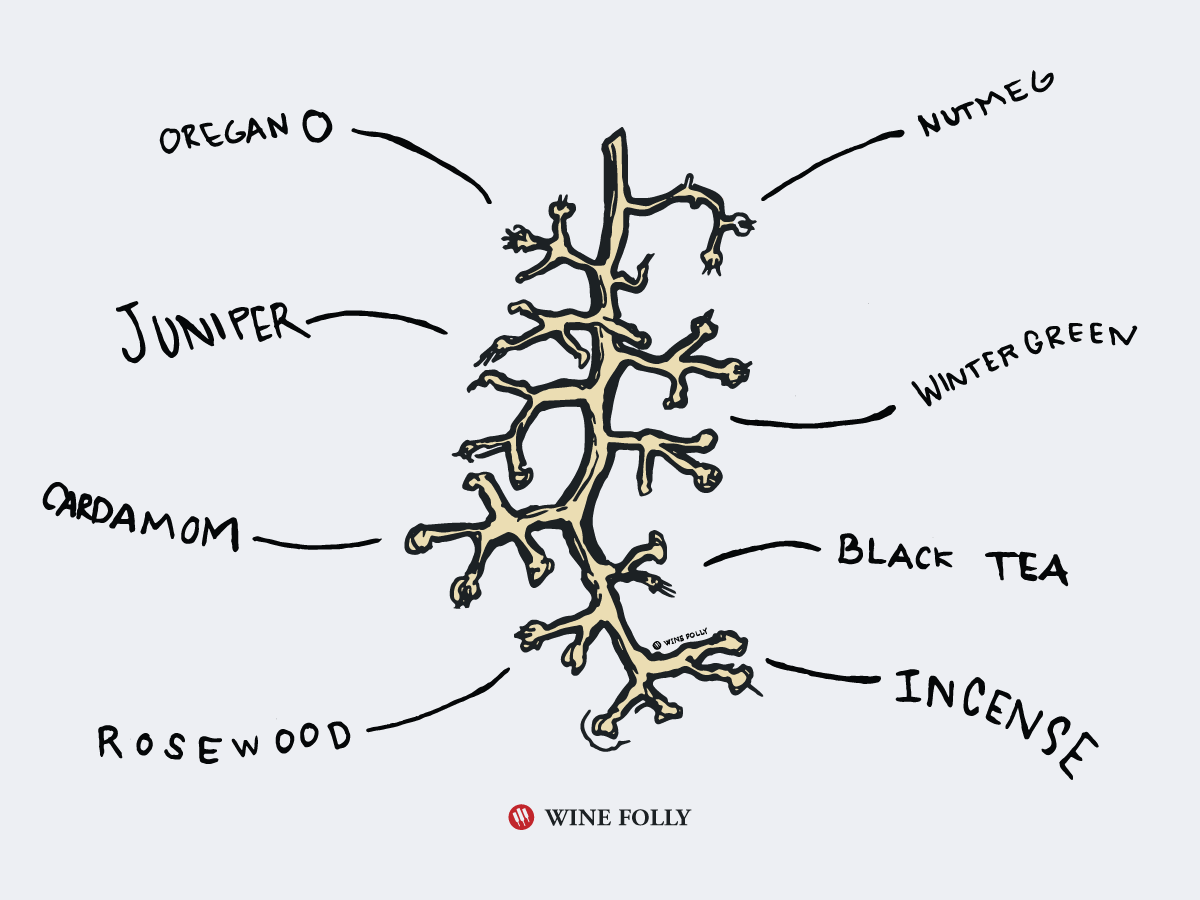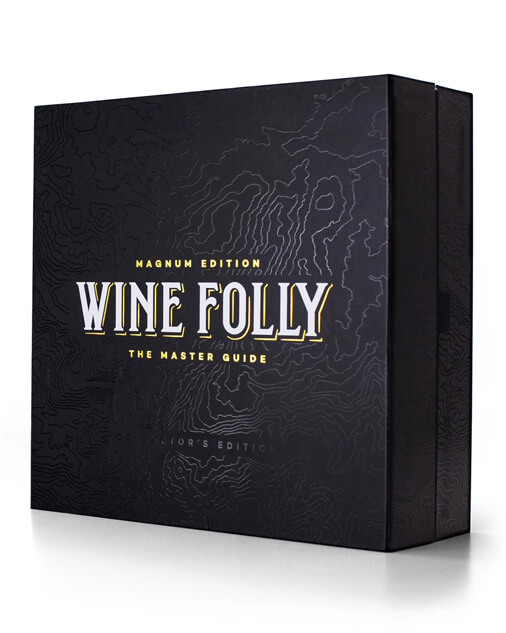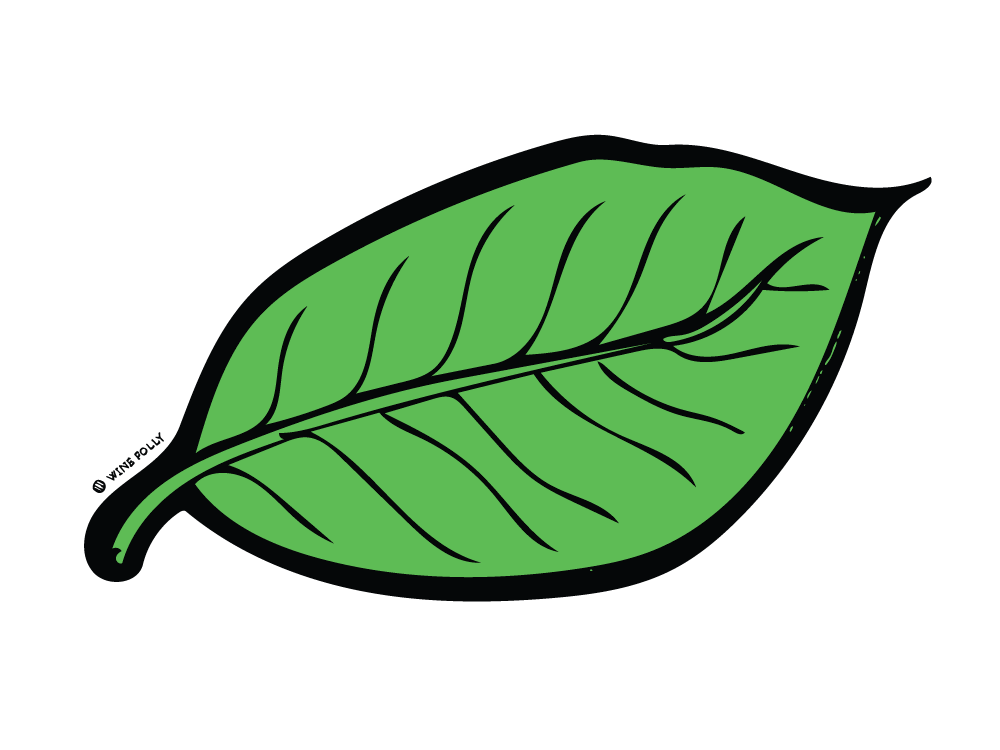We hear about whole cluster fermentation more and more each year. Perhaps you’ve also heard how they can taste “stemmy.” So, why is whole cluster so popular and how does it affect the quality of wine?
What is Whole Cluster Fermentation?
Whole cluster refers to making wine with whole bunches of grapes including their stems. (Normally, grapes go into a destemming machine before fermenting.) What might surprise you is wine was made this way for ages—before destemming machines were invented it was impractical to pluck off individual grapes by hand.
Why Ferment Whole Bunches?
Why ferment whole clusters? To make wines more complex by weaving in spicy and herbal flavors, to add candied and airy fruit notes, to add tannin structure, and to smooth out high acidity.
Beyond green and herbal notes, the stems impart a whole range of aromatic and textural qualities into wines. So, if whole cluster “stemmy” flavors have turned you off before, you might try them again. They actually help make many wines taste great.
Let’s take a look at some common grape varieties that use whole clusters in the fermentation.

Pinot Noir
Pinot Noir produces very light and delicate wines. So, if you want to intensify the structure and age-ability it’s not uncommon to ferment whole clusters. It’s now more common in Pinot Noir from Burgundy, France where producers look to traditional customs practiced here for a thousand years. In fact, Henri Jayer popularized a radical pivot away from whole clusters in the 1970s, but the practice is coming back (and in the New World as well).

The Ultimate Wine Gift
The collector’s edition set of the James Beard Award-winning Wine Folly book.
random
Examples:
 Big Table Farm 2018 Willamette Valley Pinot Noir Pinot Noir 100% Oregon, United States As always this wine is a true Willamette Valley blend. Some of each of the 8 pinot noir vineyards we work with end up in this wine. ABV: % pH: Unknown TA: Unknown RS: Unknown
Big Table Farm 2018 Willamette Valley Pinot Noir Pinot Noir 100% Oregon, United States As always this wine is a true Willamette Valley blend. Some of each of the 8 pinot noir vineyards we work with end up in this wine. ABV: % pH: Unknown TA: Unknown RS: Unknown  VT-JHYSZBKIM X
VT-JHYSZBKIM X
 SAMsARA Wine Co. 2017 Sta Rita Hills Pinot Noir Pinot Noir 100% Central Coast, California, United States ABV: 13.8% pH: Unknown TA: Unknown RS: Unknown
SAMsARA Wine Co. 2017 Sta Rita Hills Pinot Noir Pinot Noir 100% Central Coast, California, United States ABV: 13.8% pH: Unknown TA: Unknown RS: Unknown  VT-RMHZFVIWY X
VT-RMHZFVIWY X
Syrah
Syrah produces many wines with massive fruit flavors, but this varietal is also known for complex notes of peppery spice and savoriness (particularly when grown in cool climates). The technique is widely used in the Northern Rhône Valley (Syrah’s homeland, just a bit South of Burgundy). Many winemakers choose to ferment Syrah with whole clusters to enhance the spice character in these wines.
Examples:
 The Ojai Vineyard 2016 Roll Ranch Syrah Syrah 98% Central Coast, California, United States ABV: 13.6% pH: Unknown TA: Unknown RS: Unknown
The Ojai Vineyard 2016 Roll Ranch Syrah Syrah 98% Central Coast, California, United States ABV: 13.6% pH: Unknown TA: Unknown RS: Unknown  VT-NIGXUHOML X
VT-NIGXUHOML X
 Alain Graillot 2017 Crozes-Hermitage Syrah 100% Rhône, France ABV: 12.5% pH: Unknown TA: Unknown RS: Unknown
Alain Graillot 2017 Crozes-Hermitage Syrah 100% Rhône, France ABV: 12.5% pH: Unknown TA: Unknown RS: Unknown  VT-WTFVJXKHQ X
VT-WTFVJXKHQ X
 Pax Mahle Wines 2018 North Coast Syrah Syrah 100% North Coast, California, United States ABV: 12.6% pH: 3.7 TA: Unknown RS: Unknown
Pax Mahle Wines 2018 North Coast Syrah Syrah 100% North Coast, California, United States ABV: 12.6% pH: 3.7 TA: Unknown RS: Unknown  VT-KILGRCAEB X
VT-KILGRCAEB X
Gamay
Gamay tends to be light like Pinot Noir, but more rustic profile with bitterness and acidity. Because of this, one of the traditional ways to make Gamay is called carbonic maceration, where whole clusters go into a tank sealed with carbon dioxide. In this scenario, the fermentation starts inside individual grapes. The whole clusters are then pressed and fermentation finishes. This style of fermentation softens Gamay and gives it floral notes of peony, violet, and iris.
Examples:
 Marcel Lapierre 2017 Morgon Gamay 100% Beaujolais, France ABV: 13.0% pH: Unknown TA: Unknown RS: Unknown
Marcel Lapierre 2017 Morgon Gamay 100% Beaujolais, France ABV: 13.0% pH: Unknown TA: Unknown RS: Unknown  VT-ATBCDOZUQ X
VT-ATBCDOZUQ X
 Arnot-Roberts 2018 El Dorado Gamay Gamay 100% California, United States ABV: % pH: Unknown TA: Unknown RS: Unknown
Arnot-Roberts 2018 El Dorado Gamay Gamay 100% California, United States ABV: % pH: Unknown TA: Unknown RS: Unknown  VT-FZOXHTJWR X
VT-FZOXHTJWR X
 Stolpman Vineyards 2019 GDG Gamay Gamay 100% Santa Barbara County, California, United States ABV: 13.0% pH: Unknown TA: Unknown RS: Unknown
Stolpman Vineyards 2019 GDG Gamay Gamay 100% Santa Barbara County, California, United States ABV: 13.0% pH: Unknown TA: Unknown RS: Unknown  VT-HZXDGTBJR X
VT-HZXDGTBJR X
Others
Often, red grapes with thinner skins and higher acidity benefit from the winemaker’s choice to include whole clusters. It’s quite common with Grenache. Thick skinned grapes can also benefit from whole cluster fermentation though, especially for winemakers seeking a lighter extraction from rich varietals.
Examples:
 Gramercy Cellars 2017 “The Third Man” Mourvèdre 10%, Syrah 15%, Grenache 75% Washington, United States ABV: 14.0% pH: Unknown TA: Unknown RS: Unknown
Gramercy Cellars 2017 “The Third Man” Mourvèdre 10%, Syrah 15%, Grenache 75% Washington, United States ABV: 14.0% pH: Unknown TA: Unknown RS: Unknown  VT-HFLKDOQCP X
VT-HFLKDOQCP X
 Comando G Viticultores 2018 La Bruja de Rojas Grenache 100% Madrid, Spain Comando G’s “village” wine, La Bruja de Rozas is sourced from several vineyards in the vicinity of Las Rozas de Puerto Real. Pure Garnacha from granitic sand, La Bruja is perfumed and lively with plenty of fruit with a backbone of acidity and fine tannin. Hand harvested, natural yeast fermentation and a long maceration followed by nine months in 30-60 hectolitre oak vats. ABV: % pH: Unknown TA: Unknown RS: Unknown
Comando G Viticultores 2018 La Bruja de Rojas Grenache 100% Madrid, Spain Comando G’s “village” wine, La Bruja de Rozas is sourced from several vineyards in the vicinity of Las Rozas de Puerto Real. Pure Garnacha from granitic sand, La Bruja is perfumed and lively with plenty of fruit with a backbone of acidity and fine tannin. Hand harvested, natural yeast fermentation and a long maceration followed by nine months in 30-60 hectolitre oak vats. ABV: % pH: Unknown TA: Unknown RS: Unknown  VT-BNTZLFOVH X
VT-BNTZLFOVH X
 Dirty & Rowdy Family Winery 2019 “Especial” Old Friends Red Petite Sirah, Barbera, Carignan Mendocino County, California, United States Always our lightest red wine – Though red, this wine is like a rosé with baby teeth when served ice cold and it is delicious chilled with a turkey sandwich. Give it a 90 minute decant and it gets you moving and grooving – whipping up rice and beans with slow cooked pork or beef. We could drink it all. Soooooooo so PURE (zero SO2). Store half in the fridge and the other half at cellar temp. ABV: 12.0% pH: Unknown TA: Unknown RS: Unknown
Dirty & Rowdy Family Winery 2019 “Especial” Old Friends Red Petite Sirah, Barbera, Carignan Mendocino County, California, United States Always our lightest red wine – Though red, this wine is like a rosé with baby teeth when served ice cold and it is delicious chilled with a turkey sandwich. Give it a 90 minute decant and it gets you moving and grooving – whipping up rice and beans with slow cooked pork or beef. We could drink it all. Soooooooo so PURE (zero SO2). Store half in the fridge and the other half at cellar temp. ABV: 12.0% pH: Unknown TA: Unknown RS: Unknown  VT-KUWIPMYRV X
VT-KUWIPMYRV X
 Thacher Winery 2018 Valdiguie Valdiguié 100% Central Coast, California, United States Valdiguie was, for a long time, another case of mistaken grape identity. For a hundred years, it was believed to be some weird clone of the Gamay grape of Beaujolais, and went by the name “Napa Gamay”. A favorite of both winemakers and growers, the grape cropped well, had good tannin and great color, and made delicious and fresh table wines. But, as Cabernet began to dominate the market and command higher prices, many growers ripped out their old Valdiguie vines. Today the grape is almost extinct, but a few small, forward thinking producers are working to revive this old, workhorse, variety. And we’re stoked to contribute to the resurrection. ABV: % pH: Unknown TA: Unknown RS: Unknown
Thacher Winery 2018 Valdiguie Valdiguié 100% Central Coast, California, United States Valdiguie was, for a long time, another case of mistaken grape identity. For a hundred years, it was believed to be some weird clone of the Gamay grape of Beaujolais, and went by the name “Napa Gamay”. A favorite of both winemakers and growers, the grape cropped well, had good tannin and great color, and made delicious and fresh table wines. But, as Cabernet began to dominate the market and command higher prices, many growers ripped out their old Valdiguie vines. Today the grape is almost extinct, but a few small, forward thinking producers are working to revive this old, workhorse, variety. And we’re stoked to contribute to the resurrection. ABV: % pH: Unknown TA: Unknown RS: Unknown  VT-KWVMZJFIL X
VT-KWVMZJFIL X
 Paix Sur Terre 2018 The Other One Mourvèdre 100% Central Coast, California, United States The 21-year-old Mourvèdre vines at Glenrose Vineyard are some of the most mature in west Paso, and every year this wine continues to develop more complexity as the roots reach deeper into the limestone.
Paix Sur Terre 2018 The Other One Mourvèdre 100% Central Coast, California, United States The 21-year-old Mourvèdre vines at Glenrose Vineyard are some of the most mature in west Paso, and every year this wine continues to develop more complexity as the roots reach deeper into the limestone.
There are two Mourvèdre plantings on the summit at Glenrose, and we are lucky to have three terraces on both the upper and lower blocks. The upper block at 1,800 feet elevation brings the intense fruit to this wine, as well as very fresh acidity. The lower block at 1,300 feet receives less sunshine and therefore yields a wine with intense minerality and very chalky tannins that have a crushed-rock note on the palate.
As is custom, we blend the two together in various percentages every year to make a wine that has incredible freshness but also a distinct sense of place. ABV: 14.9% pH: Unknown TA: Unknown RS: Unknown  VT-LEDYISHTJ X
VT-LEDYISHTJ X
How Stems Make or Break a Wine
Stems are chemically complex, and radically shift the chemical profile of the wine.
Stems demand acidity. The stems add a wallop of potassium to fermenting must. Potassium binds with tartaric acid, so titratable acidity (TA) goes down and pH goes up. This is risky for wines with naturally lower acidity as it reduces that mouth-watering freshness and increases the risk of spoilage (from microbes).
Stems bring greenery, so they demand powerful fruit. The stems bring even higher levels of methoxypyrazines (MPs) than the berries. Thus, Bordeaux varieties (like Cabernet and Merlot) rarely ferment with whole clusters because they risk becoming too herbaceous.
Higher tannins require equally intense fruit. Stems contain a considerable amount of tannins and other phenolic compounds, many of them the same antioxidants found in chocolate and tea. Analysis reveals that, controlling for other winemaking factors, whole cluster usage drives a significant increase in tannin.
Stems bring a candied effect, so they demand minerality. The “candied” flavors associated with whole cluster fermentations are similar to those wines made with carbonic maceration (see Gamay above for a description). Some even liken the taste to a bubblegum-y fruitiness. Since it’s a distinct winemaking flavor, some argue that grapes with strong site character or “minerality” are needed to quell the cloying fruity notes.
Flavors in Wine From The Stems

Fresh green
Think of plants in their living form, still wet and filled with chlorophyll. You might smell this and think fondly of tending your herb garden. Or you might be reminded of chopping vegetables.
- Grassy: alfalfa bales, pulled weeds, poor quality weed, green tea
- Herbaceous: wintergreen, fresh oregano, dill, fresh thyme
- Vegetal: green bell pepper, jalapeno, brassica stalk

Dried green
Here’s where things start getting less polarizing. Forget the veggies, ditch the grass. You’re thinking less of the live chlorophyll kind of greenery; instead, think about the different pungency that dried or roasted herbs.
- Resinous herbs: roasted thyme, rubbed sage, herbes de provence, dried mint, juniper

Green-brown
The most intriguing and delicious contributions of fermenting whole cluster tend to be bundled in this category. The pleasant aspects of “dried green” often coexist with green-brown, yet the latter is distinct in its sexy, resinous kind of earthiness.
- Spicy: nutmeg, cinnamon stick, cardamom, incense, green peppercorn
- Woody: sandalwood, palo santo, rosewood, cigar box, black tea
Can The Percentage of Whole Cluster Tell Me How Stemmy a Wine Is?
Short answer: no.
How much the stems actually infuse their stemmy flavor into a wine varies a great deal. Some wines taste green with 20% whole cluster and others are subtle even with 60% stem inclusion.
For example, carbonic maceration doesn’t allow juice to mingle too much with the stems. While some berries get crushed under the weight of others, the vast majority of the juice remains inside the berries. A wine might be 100% whole cluster but you won’t know it.
On the other hand, a wine that is 100% whole cluster and is foot-stomped (think Lucy & Ethel) will have quite a bit more juice percolating through all those stems. Depending on the fruit you’re talking about, you may find a husky expression of stemmy-ness. Maybe not though!

Green Stems vs Brown Stems
Next time you buy fresh market grapes, take a look at the quality of the stems. Are they flexible and green or stiff and browning? Winemakers refer to the browning of stems as lignification. As you can imagine, the quality of the stems greatly affects how the wine will taste.
There’s a lot of disagreement among winemakers about what constitutes lignified. Some believe stems must be browned. Others assess stem hardness more than color. What matters is that it signals to the vintner that the vine has fully pivoted away from maintaining its canopy (the leaves) to fully ripening the grapes.
Winemakers may chew on the stems to taste and decide whether they can include them in the fermentation. Others simply embrace the potential herbaceousness and trust aging to diminish it.
Cellaring Whole Cluster Wines
If you’ve tried a wine that was a touch too stemmy for you, consider that maybe it just wasn’t ready. Even though science shows that pyrazines (green notes) persist chemically in wine, they don’t seem to in terms of human perception—they seem to age into that spicy, woody territory.
What stems do add is structure (tannin), botanical complexity, and they are a great tool to soften acidity naturally without the use of additives. Some winemakers also believe stems improve color stability, so even if stems take away some color from a young red, the color will hold its vibrancy longer.
So, the next time you say hello to a winemaker in a tasting room ask them more about what they do with their stems. They’ll be delighted to tell you more about it!
